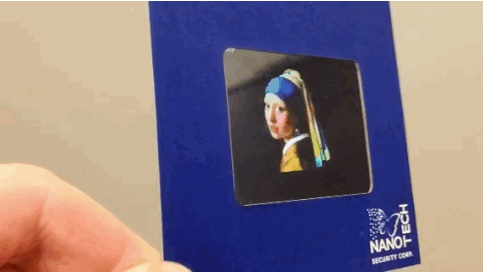Last year, I was quite taken with a structural colour story centering on tarantulas which was featured in my Dec. 7, 2015 posting.
![Cobalt Blue Tarantula [downloaded from http://www.tarantulaguide.com/tarantula-pictures/cobalt-blue-tarantula-4/]](http://www.frogheart.ca/wp-content/uploads/2016/10/CobaltBlueTarantula.jpg)
Cobalt Blue Tarantula [downloaded from http://www.tarantulaguide.com/tarantula-pictures/cobalt-blue-tarantula-4/]
Many vibrant colors in nature are produced by nanostructures rather than pigments. But their application is limited by iridescence – changing hue and brightness with viewing angles. This project aims to mimic the nanostructures that tarantulas use to produce bright, non-iridescent blue colors to inspire next-generation, energy efficient, wide-angle color displays. Moreover, one day non-iridescent structural colorants may replace costly and toxic pigments and dyes.
…
What is the context of this research?
We recently discovered that some tarantulas produce vivid blue colors using unique nanostructures not found in other blue organisms like birds and Morpho butterflies. We described a number of different nanostructures that help explain how blue color evolved at least eight times within tarantulas. These colors are also remarkably non-iridescent so that they stay bright blue even at wide viewing angles, unlike the “flashy” structural colors seen in many birds and butterflies. We hypothesize that although the hue is produced by multilayer nanostructure, it is the hierarchical morphology of the hairs controls iridescence. We would like to validate our results from preliminary optical simulations by making nano-3D printed physical prototypes with and without key features of the tarantula hairs.
What is the significance of this project?
While iridescence can make a flashy signal to a mating bird or butterfly, it isn’t so useful in optical technology. This limits the application of structural colors in human contexts, even though they can be more vibrant and resist fading better than traditional pigment-based colors. For example, despite being energy efficient and viewable in direct sunlight, this butterfly-inspired color display, that utilizes principles of structural colors, has never made it into the mainstream because iridescence limits its viewing angle. We believe this limitation could be overcome using tarantula-inspired nanostructures that could be mass-produced in an economically viable way through top-down approaches. Those nanostructures may even be used to replace pigments and dyes someday!
What are the goals of the project?
We have designed five models that vary in complexity, incorporating successively more details of real tarantula hairs. We would like to fabricate those five designs by 3D nano-printing, so that we can test our hypothesis experimentally and determine which features produce blue and which remove iridescence. We’ll start making those designs as soon as we reach our goal and the project is fully funded. Once these designs are made, we will compare the angle-dependency of the colors produced by each design through angle-resolved reflectance spectrometry. We’ll also compare them visually through photography by taking series of shots from different angles similar to Fig. S4. Through those steps, we’ll be able to identify how each feature of the complex nanostructure contributes to color.
Budget
Ultra-high resolution (nano-scale) 3D printing
$6,000
To fund nano 3D printing completely
$1,700This project has been designed using Biomimicry Thinking, and is a follow-up to our published, well-received tarantula research. In order to test our hypothesis, we are planning to use Photonic Professional GT by nanoscribe to fabricate tarantula hair-inspired prototypes by 3D printing nanostructures within millimeter sized swatches. To be able to 3D print nanostructures across these relatively large-sized swatches is critical to the success of our project. Currently, there’s no widely-accessible technology out there that meets our needs other than Photonic Professional GT. However, the estimated cost just for 3D printing those nanostructures alone is $20,000. So far, we have successfully raised and allocated $13,000 of research funds through conventional means, but we are still $7,000 short. Initial trial of our most complex prototype was a success. Therefore, we’re here, seeking your help. Please help us make this nano fabrication happen, and make this project a success! Thank you!
The researchers managed to raise $7, 708.00 in total, making this paper possible,
Tarantula-Inspired Noniridescent Photonics with Long-Range Order by Bor-Kai Hsiung, Radwanul Hasan Siddique, Lijia Jiang, Ying Liu, Yongfeng Lu, Matthew D. Shawkey, and Todd A. Blackledge. Advanced Materials DOI: 10.1002/adom.201600599 Version of Record online: 11 OCT 2016
© 2016 WILEY-VCH Verlag GmbH & Co. KGaA, Weinheim
This paper is behind a paywall but I did manage to get my hands on a copy. So here are a few highlights from the paper,
Pigment-based colorants are used for applications ranging from textiles to packaging to cosmetics.[1] However, structural-based alternatives can be more vibrant, durable, and eco-friendly relative to pigmentary colors.[2] Moreover, optical nanostructures are highly tunable, they can achieve a full color gamut by slight alterations to spacing.[3] However, light interference and/or diffraction from most photonic structures results in iridescence,[4] which limits their broader applications. Iridescent colors that change hue when viewed from different directions are useful for niche markets, such as security and anticounterfeiting, {emphasis mine} [5] but are not desirable for most applications, such as paints, coatings, electronic displays, and apparels. Hence, fabricating a photonic structure that minimizes iridescence is a key step to unlocking the potential applications of structural colors.
Noniridescent structural colors in nature are produced by coherent scattering of light by quasi-ordered, amorphous photonic structures (i.e., photonic glass),[6–10] or photonic polycrystals [9,11–14] that possess only short-range order. Iridescence is thought to be a fundamental component of photonic structures with long-range order, such as multilayers.[4] However, the complexity of short-range order photonic structures prohibits their design and fabrication using top-down approaches while bottom-up synthesis using colloidal suspension[15,16] or self-assembly[17–20] lack the tight controls over the spatial and temporal scales needed for industrial mass production. Photonic structures with long-range order are easier to model mathematically. Hence, long-range order photonic structures are intrinsically suitable for top-down fabrication, where precise feature placement and scalability can be guaranteed.
Recently, we found blue color produced by multilayer interference on specialized hairs from two species of blue tarantulas (Poecilotheria metallica (Figure 1a,b) and Lampropelma violaceopes) that was largely angle independent.[21] We hypothesize that the iridescent effects of the multilayer are reduced by hierarchical structuring of the hairs. Specifically, the hairs have: (1) high degrees of rotational symmetry, (2) hierarchy—with subcylindrical multilayers surrounding a larger, overarching multilayer cylinder, and (3) nanoscale surface grooves. Because all of these structures co-occur on the tarantulas, it is impossible to decouple them simply by observing nature. Here, we use optical simulation and nano-3D rapid prototyping to demonstrate that introducing design features seen in these tarantulas onto a multilayer photonic structure nearly eliminates iridescence. As far as we are aware, this is the first known example of a noniridescent structural color produced by a photonic structure with both short and long-range order. This opens up an array of new possibilities for photonic structure design and fabrication to produce noniridescent structural colors and is a key first step to achieving economically viable solutions for mass production of noniridescent structural color. … (p. 1 PDF)
There is a Canadian security and anti-counterfeiting company (Nanotech Security Corp.), inspired by the Morpho butterfly and its iridescent blue, which got its start in Bozena Kaminska’s laboratory at Simon Fraser University (Vancouver, Canada).
Getting back to the paper, after a few twists and turns, they conclude with this,
This approach of producing noniridescent structural colors using photonic structures with long-range order (i.e., modified multilayer) has, to our knowledge, not been explored previously. Our findings reaffirm the value of using nature and the biomimetic process as a tool for innovation and our approach also may help to overcome the current inability of colloidal self-assembly to achieve pure noniridescent structural red due to single-particle scattering and/or multiple scattering.[25] As a result, our research provides a new and easy way for designing structural colorants with customizable hues (see Figure S6, Supporting Information, as one of the potential examples) and iridescent effects to satisfy the needs of different applications. While nano-3D printing of these nanostructures is not viable for mass production, it does identify the key features that are necessary for top-down fabrication. With promising nanofabrication techniques, such as preform drawing[26]—a generally scalable methodology that has been demonstrated for fabricating particles with complex internal architectures and continuously tunable diameters down to nanometer scale[27] – it is possible to mass produce these “designer structural colorants” in an economically viable manner. Our discovery of how to produce noniridescent structural colors using long-range order may therefore lead to a more sustainable future that does not rely upon toxic and wasteful synthetic pigments and dyes. (p. 5)
I’m glad to have gotten caught up with the work. Thank you, Bor-Kai Hsiung.

